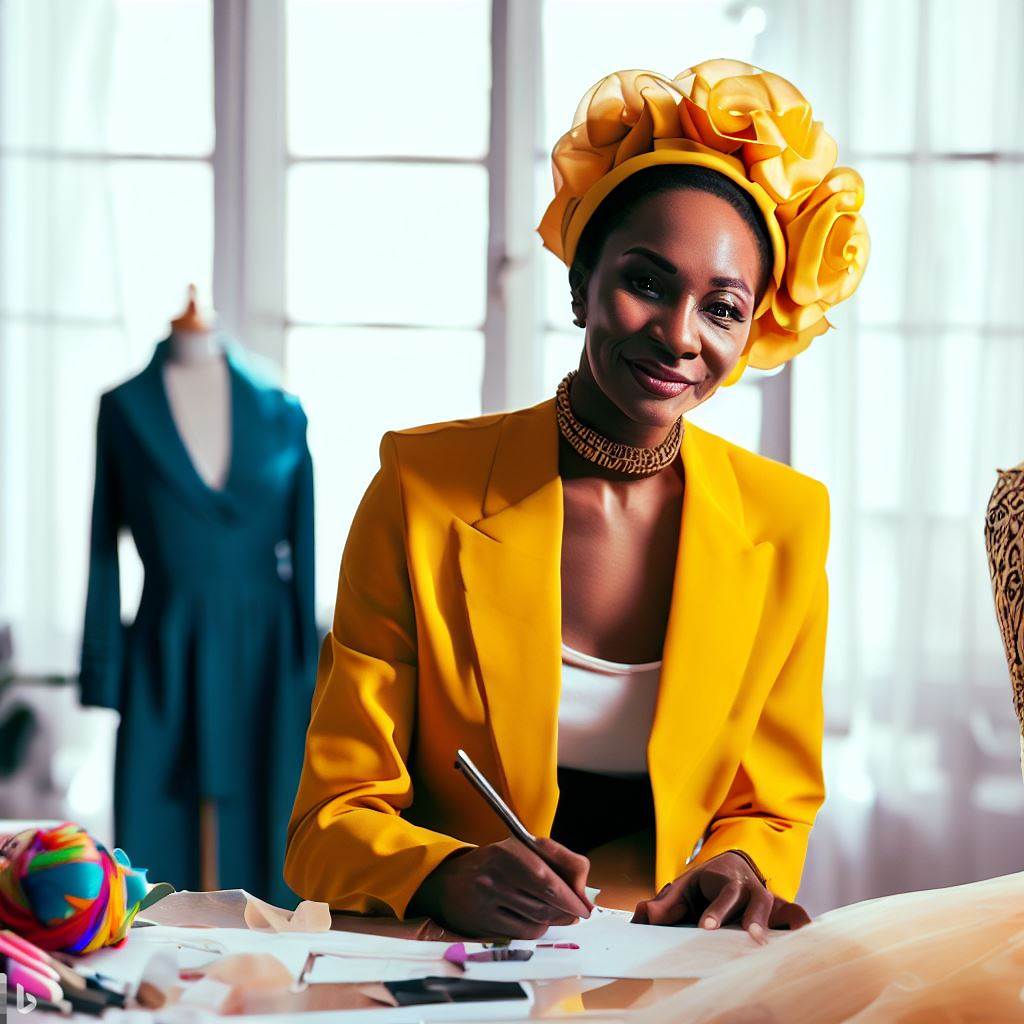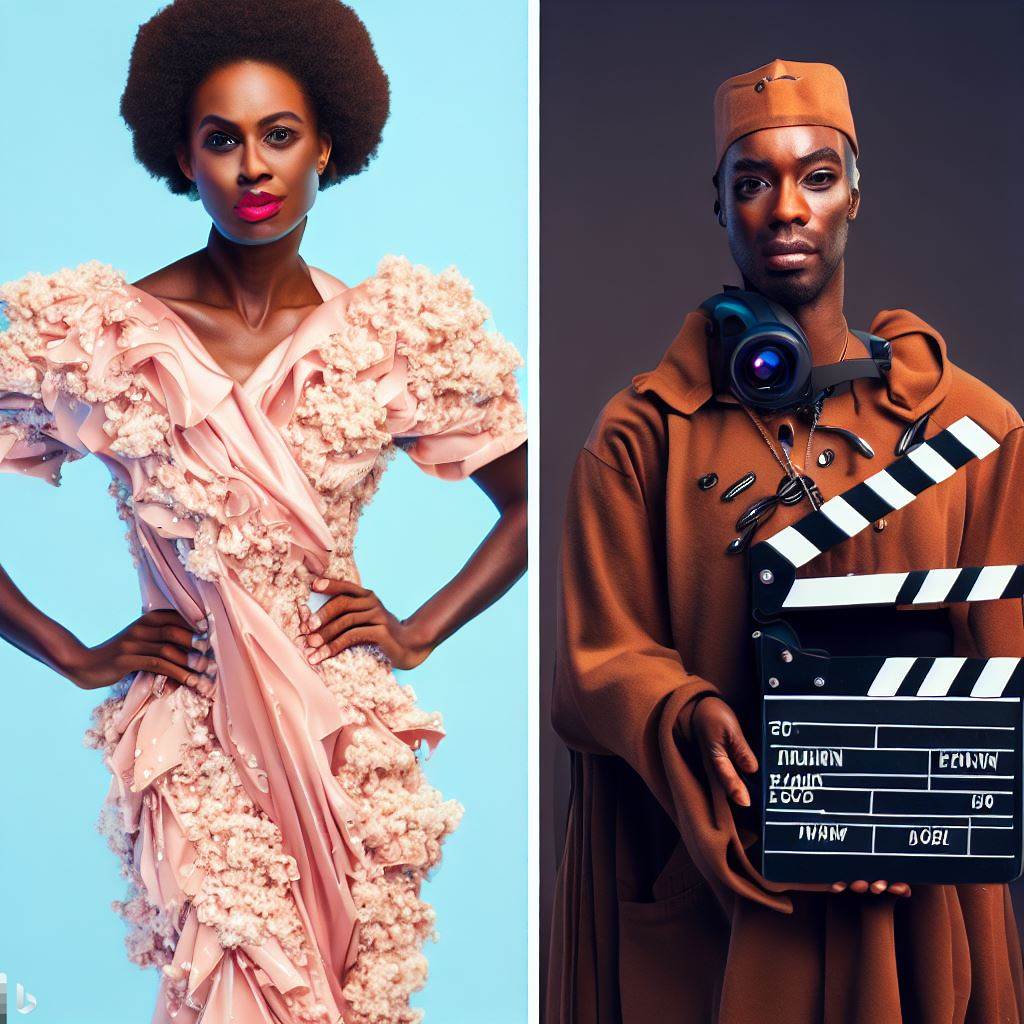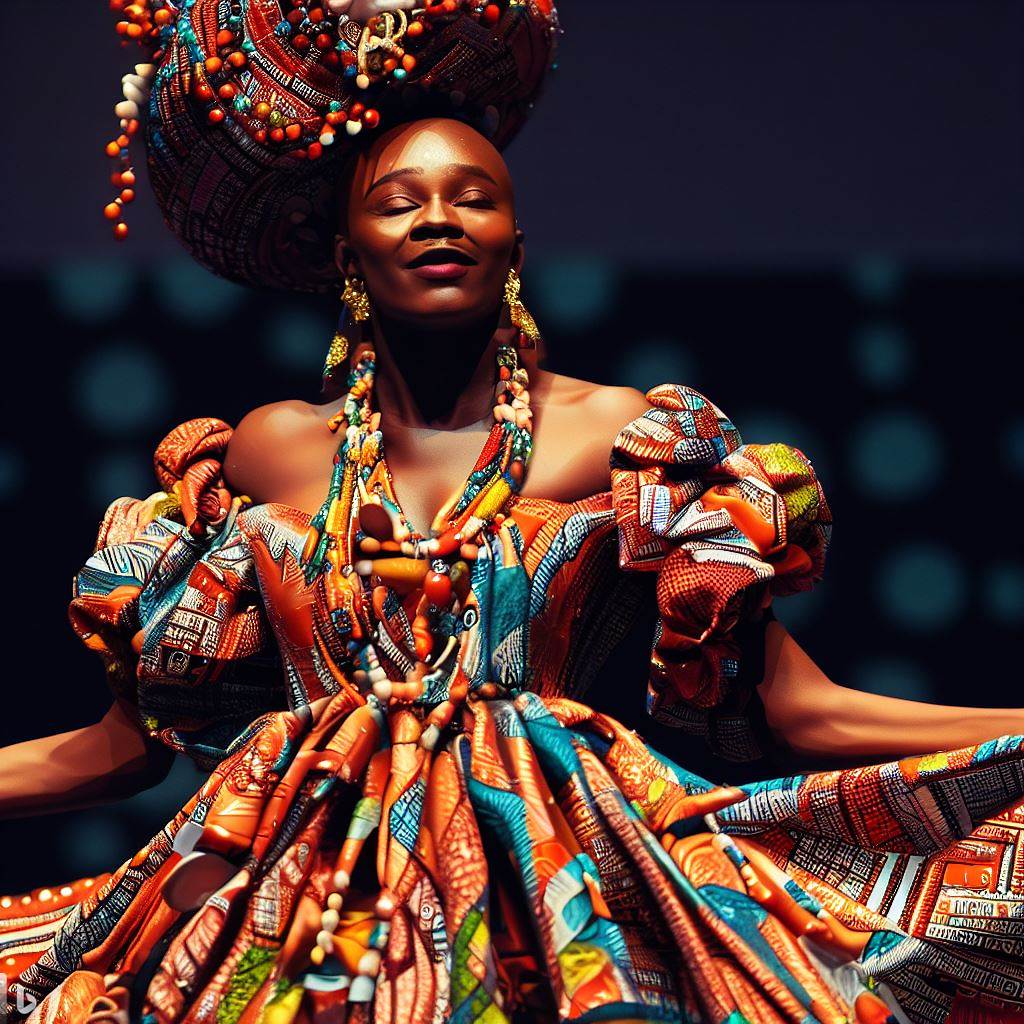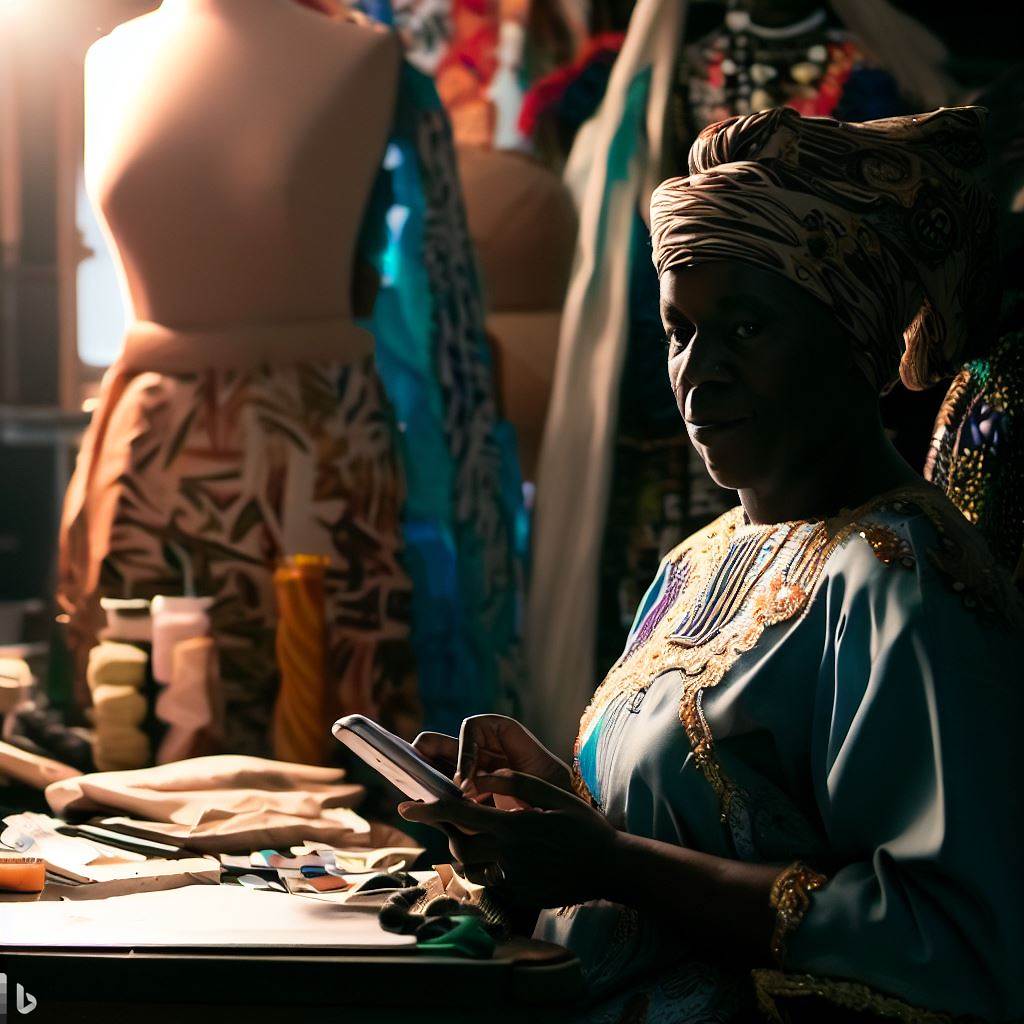Introduction
Nigeria cinema costume designers are responsible for creating costumes that accurately represent the characters and the film’s setting.
They work closely with directors and actors to establish the visual identity of the characters, enhancing the storytelling process.
By carefully selecting fabrics, colors, and accessories, costume designers give depth and authenticity to the characters, making them relatable to the audience.
Nigeria’s cinema industry has become a powerhouse in the African film market, also known as Nollywood.
With its rapid growth and global recognition, it has created a distinct identity for Nigerian cinema.
Within this industry, costume designers play a vital role in bringing characters to life through their craft.
Costume designers are often overlooked in the film industry, overshadowed by the accolades given to directors and actors.
However, their work is essential in creating memorable and visually captivating films.
Their attention to detail and dedication contribute significantly to the success and overall identity of Nigerian cinema.
In fact, costume designers are truly the unsung heroes of Nigeria’s cinema industry.
Their contributions, both artistic and practical, are invaluable in creating authentic characters and enhancing the storytelling experience.
It is important to recognize their talent and the impact they have on the success of Nigerian films.
Historical Background of Costume Design in Nigerian Cinema
Early days of Nigerian cinema and costume design
- Nigerian cinema had its humble beginnings in the late 19th century.
- During this time, costume design in Nigerian cinema was a basic and underdeveloped process.
- Costumes were often borrowed from individuals or simply improvised with whatever was available.
- These early Nigerian films mainly focused on capturing everyday life and societal issues.
Influence of traditional Nigerian clothing and cultural heritage
- Traditional Nigerian clothing plays a vital role in Nigerian cinema’s costume design.
- The diverse cultural heritage of Nigeria provides costume designers with a rich source of inspiration.
- Nigeria’s numerous tribes each have unique traditional clothing styles and accessories.
- These traditional garments are often incorporated into costumes to accurately depict different characters.
Evolution of costume design in Nigerian cinema over the years
As Nigerian cinema grew and developed over the years, so did costume design.
- Advancements in technology and the availability of resources contributed to the improvement of costume design.
- Costume designers now have access to a wider range of materials and techniques.
- They are able to create more elaborate and visually stunning costumes that enhance the storytelling.
- Nigerian filmmakers have also recognized the importance of costume design in the overall cinematic experience.
- Costume designers are now given more creative freedom to bring characters and stories to life.
- They carefully craft costumes that not only look visually appealing but also accurately represent the characters.
- Costume design has become an integral part of Nigerian cinema, contributing to the immersive experience for viewers.
With each passing film, costume designers in Nigerian cinema continue to innovate and push boundaries.
They play a crucial role in bringing characters and stories to life, ensuring authenticity and visual appeal.
Their dedication and creativity make them the unsung heroes behind the success of Nigerian cinema.
Read: Current Trends in Nigerian Costume Design Profession
The Importance of Costume Design in Nigerian Cinema
Enhancing storytelling through costumes
- Costumes play a crucial role in conveying the story and setting the mood.
- Well-designed costumes can transport the audience to a different time or place.
- Costumes help to establish the era or context in which the movie is set.
- Through costumes, filmmakers can effectively portray the cultural background of characters.
- By paying attention to costume details, costume designers add depth and authenticity to the story being told.
Depicting characters’ personalities, professions, and social status
- Costumes serve as a visual cue that immediately informs the audience about a character’s personality.
- Through clothing choices, costume designers can highlight a character’s occupation or profession.
- Distinct costumes can differentiate between different social classes, adding layers to character development.
- Characters’ costumes can also reflect their journey or transformation throughout the movie.
- Well-thought-out costumes can subtly communicate a character’s motivations and inner conflicts.
Creating a distinct visual identity for movies
- Costumes contribute to the overall aesthetic of a movie, making it visually captivating.
- Unique and memorable costumes can help a film to stand out and leave a lasting impression.
- The choice of colors, fabrics, and styles can create a specific visual identity for a movie.
- Costume designers work closely with production designers to ensure a cohesive visual narrative.
- Attention to costume details can make a movie visually appealing and visually consistent.
Portraying historical eras and cultural accuracy
- Costume designers play a vital role in accurately representing historical time periods.
- Through extensive research, they strive to recreate clothing styles and fashion trends of the past.
- Authentic costumes help to transport the audience back in time and create a believable world.
- Costumes must also accurately depict the cultural traditions and practices of different ethnic groups.
- By ensuring cultural accuracy, costume designers promote diversity and inclusivity in Nigerian cinema.
In short, costume design is an essential aspect of Nigerian cinema.
Through costumes, the storytelling is enhanced, characters are brought to life, visual identities are created, and historical eras are accurately portrayed.
Costume designers deserve recognition and appreciation for their significant contributions to the success of Nigerian movies.
Read: Educational Pathway to a Costume Design Career in Nigeria
Challenges Faced by Costume Designers in Nigeria
Limited budget and resources
- Costume designers in Nigeria often face the challenge of working with a limited budget.
- They have to carefully prioritize and allocate funds to meet the demands of each production.
- Acquiring high-quality fabrics, accessories, and other materials can be difficult due to financial constraints.
- Limited resources also affect the availability of specialized equipment and technologies necessary for costume design.
Scarcity of skilled costume designers
- Finding skilled and experienced costume designers in Nigeria can be a challenge.
- There is a scarcity of professionals who possess the necessary knowledge and expertise in costume design.
- Many costume designers in Nigeria receive training through informal apprenticeships rather than formal educational programs.
- This shortage of skilled professionals can lead to an increased workload for those available and compromises in design quality.
Balancing creativity with cultural sensitivity
- Costume designers in Nigeria often face the challenge of creating costumes that are both visually appealing and culturally accurate.
- They need to strike a balance between artistic creativity and respecting the cultural traditions and sensitivities of the characters they dress.
- Misrepresenting or appropriating cultural symbols can lead to backlash and offend audiences.
- Researching and understanding the cultural context of the production is crucial for costume designers to create authentic and respectful designs.
Coping with tight production schedules
- Costume designers in Nigeria frequently face demanding production schedules that leave little time for meticulous costume design.
- They have to work under pressure to meet deadlines, often compromising on the level of detail and craftsmanship.
- Quick turnarounds can limit the time available for research, fitting sessions, and alterations, affecting the overall quality of the costumes.
- Costume designers need to efficiently manage their time and resources to deliver costumes that meet the production’s requirements.
In essence, costume designers in Nigeria face several challenges in their craft. Limited budgets and resources necessitate careful allocation and prioritization.
The scarcity of skilled professionals adds pressure to their workload and compromises the quality of designs.
Balancing creativity with cultural sensitivity is crucial to avoid misrepresentation or cultural appropriation.
Coping with tight production schedules requires efficient time management while still meeting the demands of the production.
Despite these challenges, costume designers remain an integral part of Nigeria’s cinema industry, contributing to the visual storytelling and success of each production.
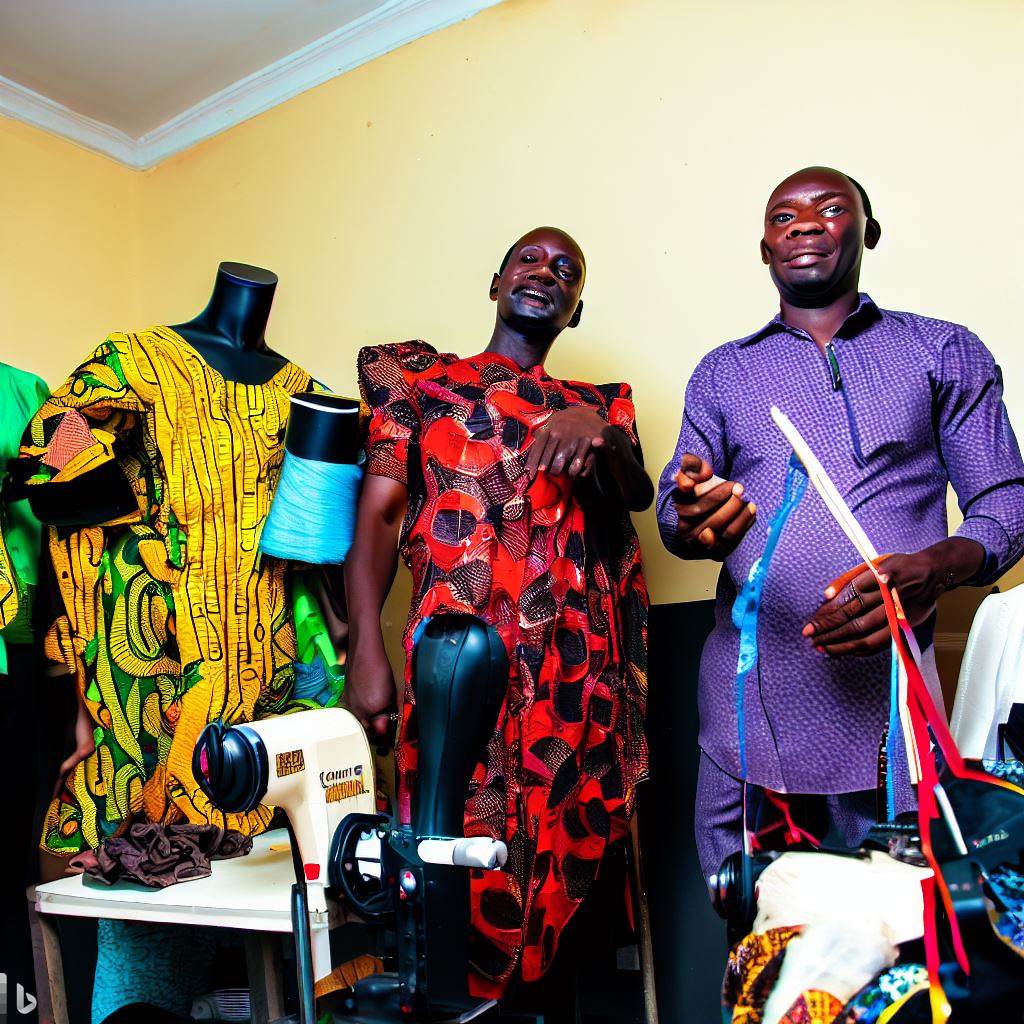
Successful Costume Designers in Nigerian Cinema
Spotlight on notable costume designers and their contributions
- Ogo Okafor: Known for his attention to detail, Okafor has created memorable costumes for various Nigerian films.
- Aderonke Adedeji: Adedeji’s creativity has enhanced the visual appeal of numerous characters through her costumes.
- Uche Nancy: Nancy’s expertise in costume design has earned her recognition and admiration in the Nigerian film industry.
- Chinwe Obazi: Obazi’s unique style has brought authenticity and depth to characters in Nigerian cinema.
- Ejiro Amos Tafiri: Tafiri’s innovative approach to costume design has elevated the storytelling in Nigerian films.
Celebrating their artistic vision and impact on films
The work of costume designers in Nigerian cinema cannot be overstated. Their artistic vision and attention to detail play a crucial role in bringing characters to life on the big screen.
Costume designers work tirelessly behind the scenes, ensuring actors’ attire reflects characters, backgrounds, and film aesthetics.
Through their creativity and expertise, costume designers contribute to the success and impact of Nigerian films.
They help to establish a visual identity for characters, making them more relatable and believable to the audience.
The right costume can instantly transport viewers to a specific time period, geographical location, or social class, adding depth and authenticity to the storytelling.
Examples of iconic costumes that have shaped Nigerian cinema
Several iconic costumes in Nigerian cinema have left a lasting impression on audiences and influenced fashion trends. Some notable examples include:
- Genevieve Nnaji’s elegant and regal outfits in the movie “Lionheart” showcased the beauty of Nigerian culture and garnered international acclaim.
- Pete Edochie’s traditional Igbo attire in “Things Fall Apart” accurately represented the character’s cultural heritage, making it a defining aspect of the film.
- Omotola Jalade Ekeinde’s glamorous and fashionable outfits in “The Figurine” reflected the character’s modern and sophisticated personality, resonating with viewers.
- Ramsey Nouah’s dapper suits in “Living in Bondage” epitomized the wealthy elite, setting the tone for subsequent films and cementing his character’s status.
- Rita Dominic’s vibrant and colorful outfits in “The Meeting” captured the essence of her quirky, free-spirited character, leaving a lasting visual impact.
These examples demonstrate the power of costume design in Nigerian cinema.
The choices made by costume designers not only enhance the characters but also contribute to the overall cinematic experience.
They shape the culture, style, and perception of Nigerian films, leaving a lasting impression on both local and international audiences.
Read: Case Study: Influential Nigerian Costume Designers’ Journey
Collaboration between Costume Designers and Filmmakers
Collaboration between costume designers and filmmakers is the backbone of successful costume designs in Nigeria’s cinema industry.
Importance of effective communication between costume designers and directors
Effective communication between costume designers and directors plays a significant role in this collaboration.
- Clear communication ensures the costume designer understands the director’s vision.
- It helps in creating costumes that align with the overall aesthetic and theme of the film.
- Effective communication minimizes the chances of misunderstandings and costly mistakes.
- Collaboration allows the costume designer to contribute their expertise to enhance the narrative.
- Costume designers need to comprehend the characters’ personalities to design appropriate costumes.
Building a strong working relationship for successful costume designs
Building a strong working relationship between costume designers and filmmakers is essential.
- Developing trust and mutual respect between costume designers and filmmakers is crucial.
- A strong relationship paves the way for open discussions, ideas, and creative problem-solving.
- Collaboration fosters the exchange of feedback, leading to better costume designs.
- Understanding each other’s roles helps in effectively executing the director’s vision through costumes.
- Building a relationship based on trust allows for seamless decision-making during costume fittings and alterations.
Challenges and benefits of collaborating with other production departments
Collaborating with other production departments brings its challenges and benefits.
- Collaborating with the production design team ensures costumes blend harmoniously with the sets.
- Working with the makeup department helps in achieving a cohesive look for the characters.
- Close collaboration with the cinematography department assists in enhancing visual storytelling.
- Coordinating with the sound team ensures costumes do not interfere with audio recordings.
- Collaboration with the script department helps in designing costumes that reflect the story’s timeline accurately.
Collaborating with all these production departments adds layers of depth and enhances the overall cinematic experience.
Basically, collaboration between costume designers and filmmakers is vital for successful costume designs in Nigeria’s cinema.
Effective communication, strong director-designer relationships, and inter-departmental collaboration create impactful costumes in film and theater.
The unsung heroes, costume designers, deserve recognition for their valuable contributions to the Nigerian film industry.
Read: How Costume Design Contributes to Nigerian Film Narratives
Recognition and Future Prospects for Nigerian Costume Designer
Raising awareness about the significant contributions of costume designers
In order to recognize and appreciate the invaluable role played by costume designers in Nigerian cinema, it is crucial to raise awareness about their significant contributions.
The audience and industry stakeholders need to understand the importance of costume design in creating memorable characters and enhancing storytelling.
Encouraging investment and support for costume design in Nigerian cinema
To ensure the growth and development of costume design in Nigerian cinema, it is vital to encourage investment and provide support for this artistic field.
Financial backing and resources are necessary to create authentic and visually stunning costumes that elevate the overall production value of Nigerian films.
Opportunities for costume designers to showcase their talent internationally
Nigerian costume designers possess immense talent that deserves recognition beyond national borders.
Creating opportunities for them to showcase their work internationally can open doors for collaborations, exposure, and career advancement.
International film festivals, exhibitions, and partnerships can serve as platforms for Nigerian costume designers to gain global attention and recognition.
Conclusion
Throughout this blog section, we have explored the crucial role and immense importance of costume designers in the Nigerian cinema industry.
They are the masterminds behind the iconic looks and visually captivating characters on the big screen.
Costume designers play a crucial part in storytelling, as their designs contribute to the overall narrative and help create memorable experiences for audiences.
It is essential for us, as viewers and fans of Nigerian cinema, to recognize and appreciate the tireless efforts of costume designers.
While they often work behind the scenes, their creativity and dedication bring life to the characters we love and admire.
They deserve recognition and support for their invaluable contribution to the success of Nigerian films.
As Nigerian cinema continues to grow and gain international recognition, the future for costume designers looks bright.
With the rise of more ambitious and diverse film projects, there will be increased opportunities for costume designers to showcase their talents and push creative boundaries.
The Nigerian cinema industry has the potential to produce groundbreaking, visually stunning films, and costume designers will be at the forefront of this growth.
In closing, costume designers are the unsung heroes of Nigerian cinema. Their contributions are vital to the success and overall experience of a film, yet they often remain unrecognized.
We should celebrate and support these talented individuals who enrich our cinematic experiences with their artistry and vision.

